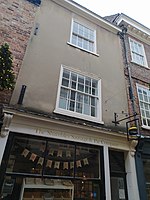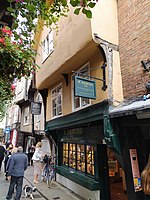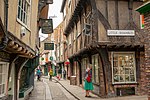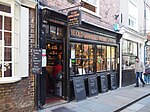41–42 The Shambles
15th-century establishments in England15th century in YorkBuildings and structures in North YorkshireGrade II* listed buildings in YorkThe Shambles ... and 2 more
Timber framed buildings in YorkshireUse British English from October 2022
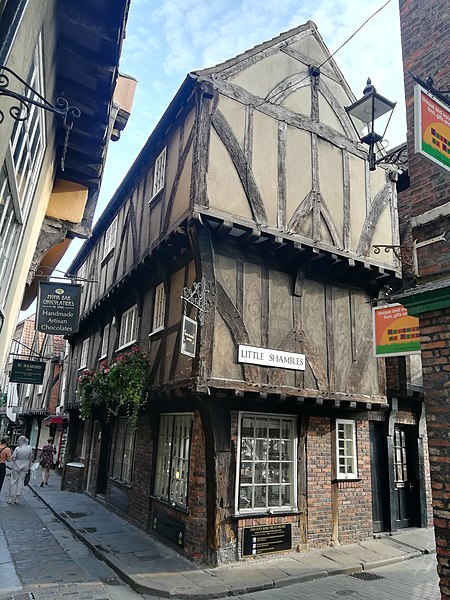
41 and 42 The Shambles is a historic building in the city centre of York, in England. The building was constructed in the late 15th century, as a three-storey timber framed building on The Shambles. The upper storeys are jettied on both the Shambles and Little Shambles fronts. The ground floor was later rebuilt in brick, and the upper floors are rendered. Inside, the timber frame survives intact, including a crown post roof.The building was restored in 1950, and continues to serve as a shop and workshop. It was Grade II* listed in 1954.
Excerpt from the Wikipedia article 41–42 The Shambles (License: CC BY-SA 3.0, Authors, Images).41–42 The Shambles
Shambles, York Bishophill
Geographical coordinates (GPS) Address Nearby Places Show on map
Geographical coordinates (GPS)
| Latitude | Longitude |
|---|---|
| N 53.95954 ° | E -1.08021 ° |
Address
Shambles (The Shambles)
Shambles
YO1 7LX York, Bishophill
England, United Kingdom
Open on Google Maps
